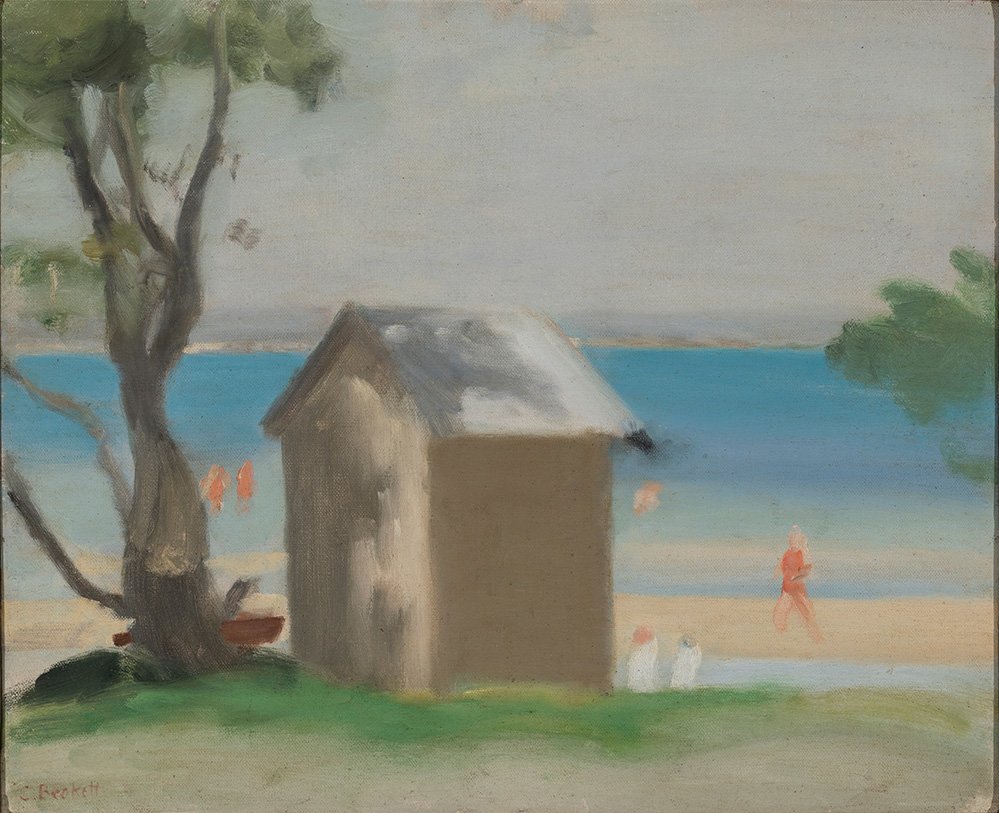The solitary bathing box
Clarice Beckett
The solitary bathing box c. 1932
oil on canvas on board
Private collection
The brilliant light of early afternoon saturates The solitary bathing box: the short throw of shadow cast by the sinewy ti-tree onto the structure suggests the sun is high in a summer sky. Natural and built forms are more clearly delineated in works Beckett painted in bright sunlight than those shrouded in the gloaming, hazes, and mists of other subjects. She also revels in the use of heightened colour despite the insistence of Meldrum that colour was of less immediate importance than tonal values.
Beckett’s technical approach to painting light and arranging colour balanced the analytical with the experimental, even when depicting forms as concealing and mutable as dark shadows: ‘you always put a bit of the colour of the object you’re painting into its shadow, as it gives a greater luminosity’ the artist shared while on a coastal painting excursion.


